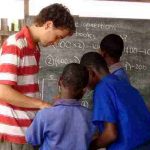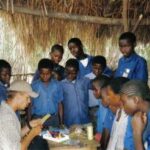VIGS GHANA has the greatest number of teaching-volunteer placements as well as the most variety of subjects to teach in Ghana Africa. Perfect for teaching internships. You can volunteer as:
- ASSISTANT HEAD TEACHER
- CITIZENSHIP EDUCATION TEACHER
- CLASS TEACHER
- COMPUTERS AND IT TEACHER
- ENGLISH LANGUAGE TEACHER
- KINDERGARTEN TEACHER
- MATH TEACHER
- PHYSICAL EDUCATION TEACHER
- PRE-KINDERGARTEN TEACHER
- SCIENCE TEACHER



